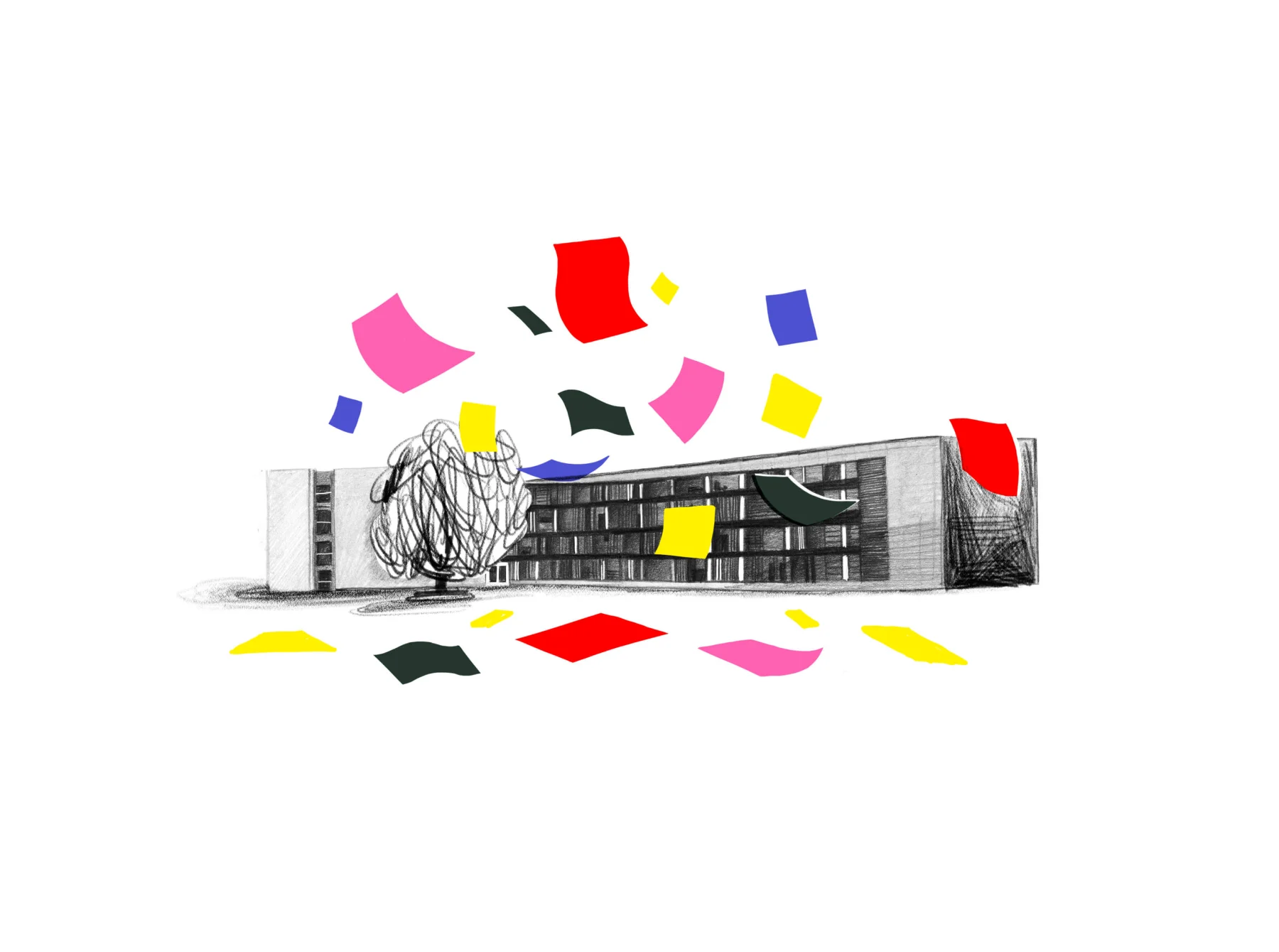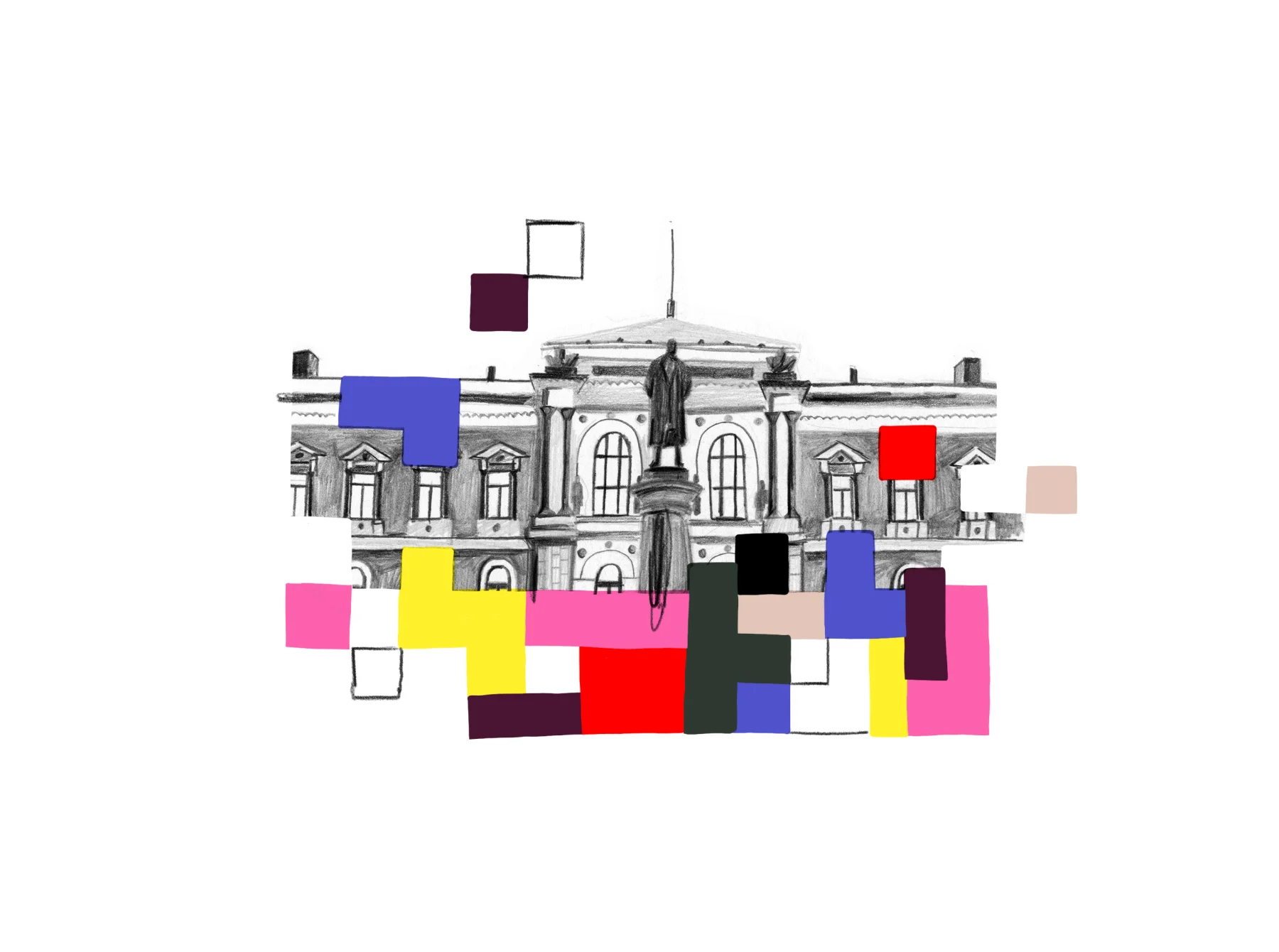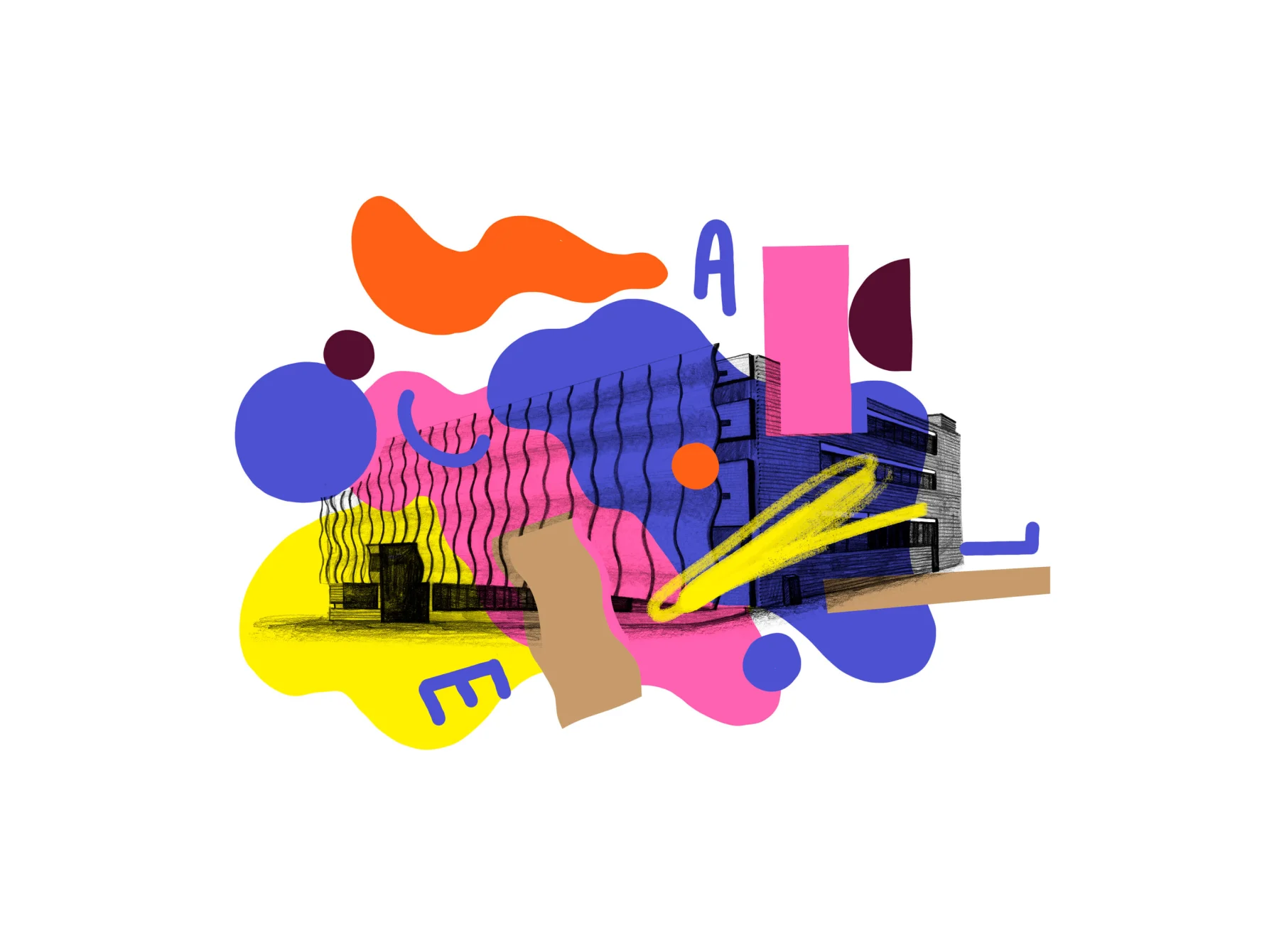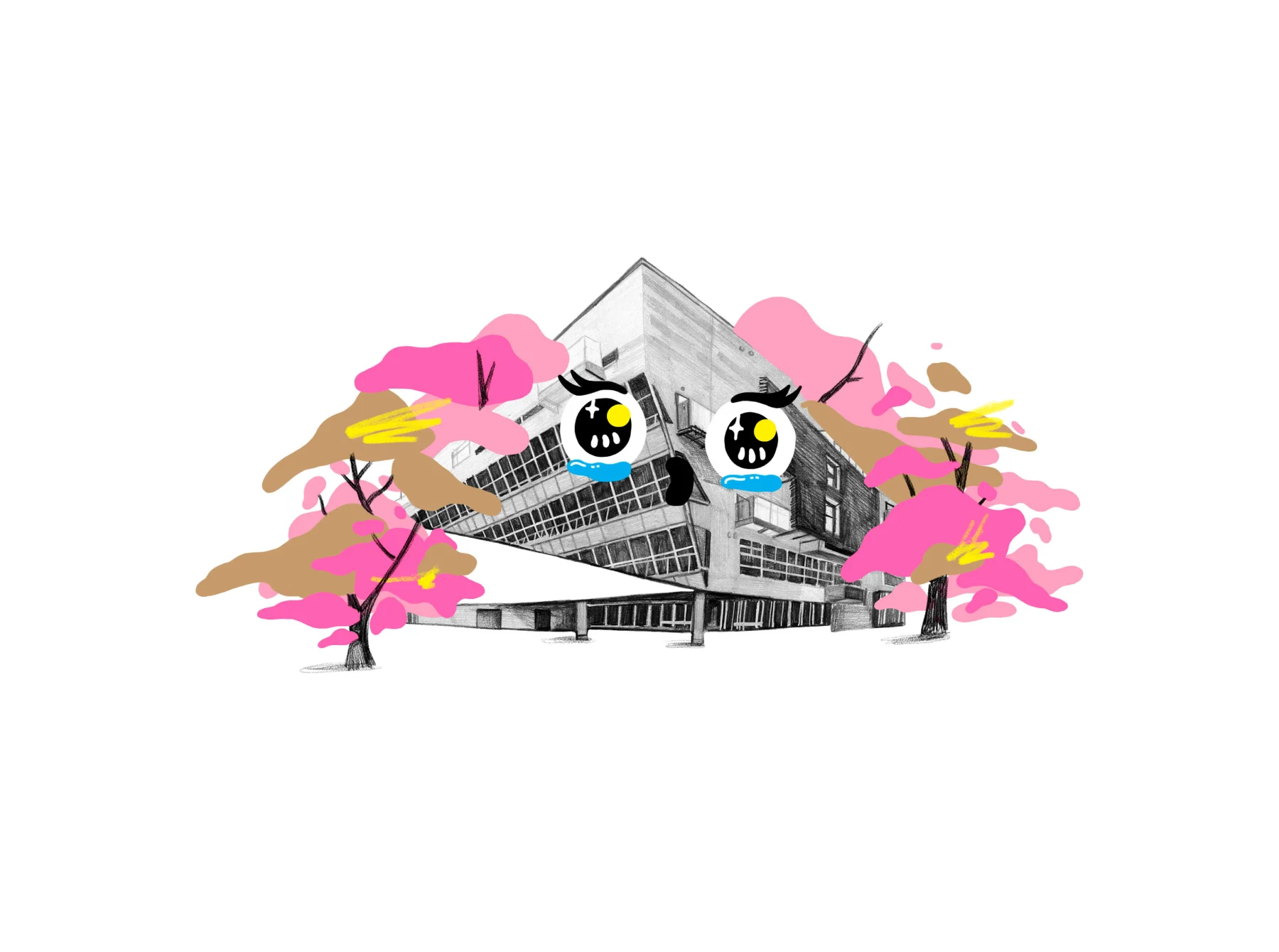
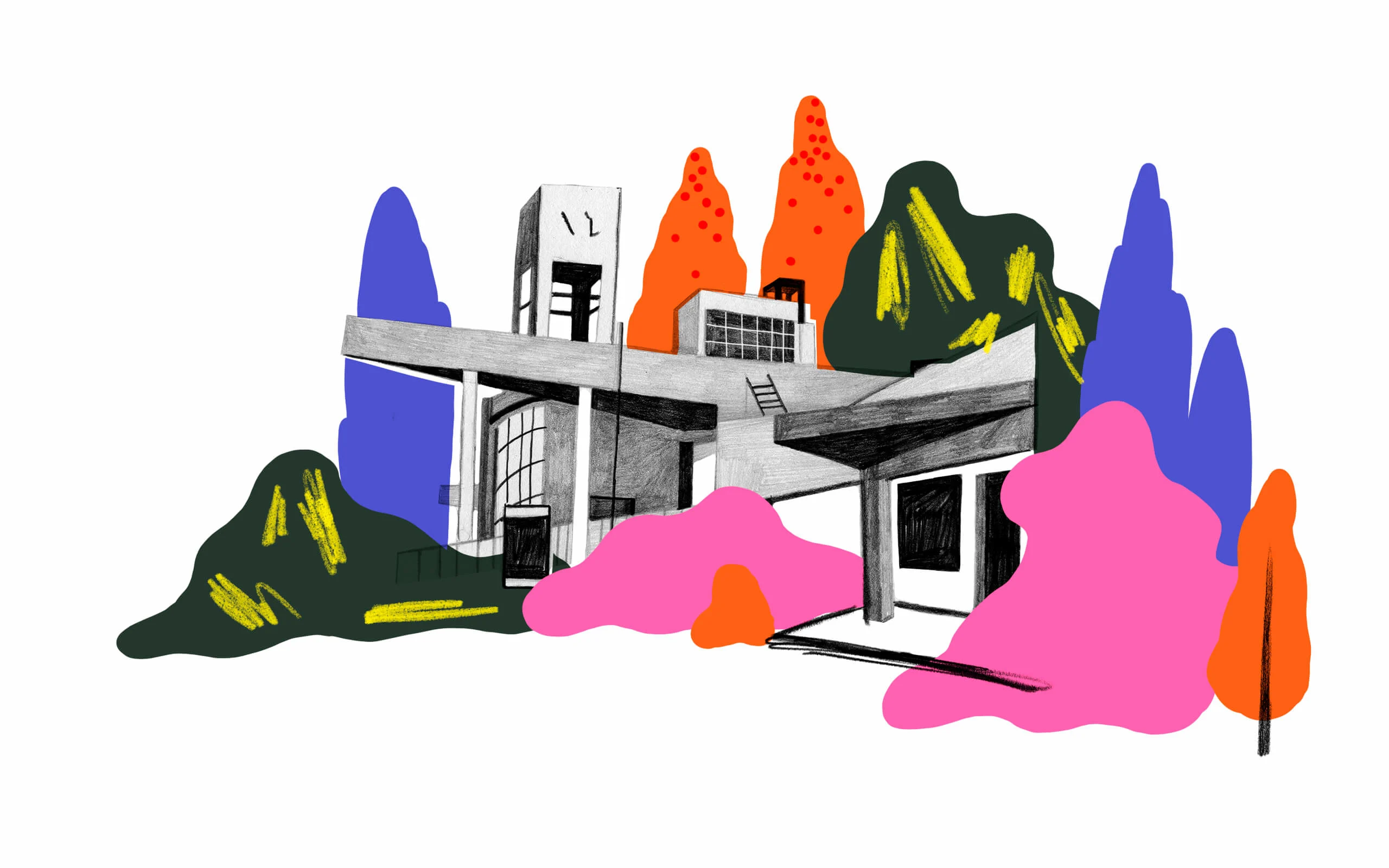
Creative education is vital. But creative education is, in places, broken. So WeTransfer has long been interested in supporting new types of programs.
It’s why we helped Nelly Ben Hayoun launch The University of the Underground, a free masters course that uses design thinking to challenge the way the world works.
From there, we developed the Pioneers list. Working with our pals at Creative Lives in Progress (formerly Lecture in Progress), we have identified eight schools around the world who deserve credit for doing things differently. See the whole list here.
“India is almost like a continent rather than a country. Different time zones exist here; on one side we are sending rockets to the moon, and on the other, we are still using bows and arrows.” Speaking from Ahmedebad is Dr Pradyumna Vyas, the current director of the National Institute of Design (NID) – India’s first design school.
At NID though, the past and the future, the traditional and modern, have never been mutually exclusive. From the start, the institute has prioritized learning from the field – looking at social and industrial reality, and using design to create a better quality of life.
“If we talk about different sectors – healthcare, transportation, medicine, government, agriculture – design is required. Where there is poverty, debilitating resources, pollution, crime, gender issues, it can become crucial.”

Today, design in India is directly connected with the country’s economy; creative professions boom when the economy does. With increased income comes a demand for better designed clothes, furniture, cars – a better quality of life. NID may have been the first design school in India, but according to Pradyumna, there are now more than 100, with at least 50% of these being established in the last seven years.
But despite this influx of schools, India still needs many thousands of designers – they are simply not producing as many as China, for example. In a country of 1.35 billion people – 65% who are under 35 – and in an era of automation, Pradyumna has some concerns. “For a young country, it’s a big worry,” he admits. “But the challenge for a place like NID is how you can convert this kind of crisis into opportunity.”
For Pradyumna, this is something to rise to. “We feel that we have the edge over the world which developed earlier, because we have faced the challenges that the world is facing today, of survival, sustainable development and materials.
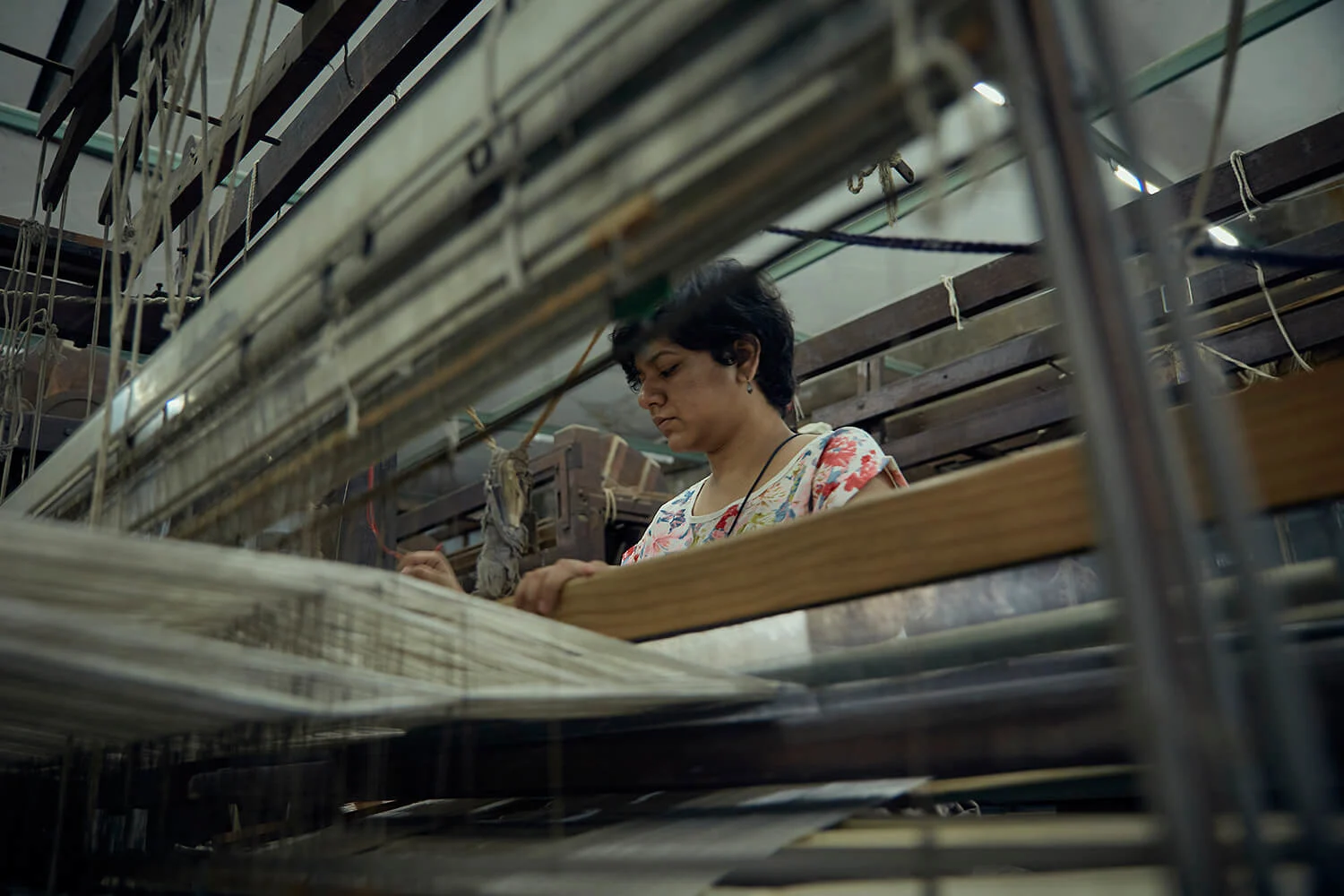
And he’s confident too in the skills of his students. “Any challenge you give, they are ready to accept. That’s because we focus more on process, rather than the end result.”
Part of this stems from a decision to focus less on individualistic design thinking. “We are not creating design heroes or icons like Philippe Starck. What we have tried to do is initiate the co-creation of design activity. It’s a participatory act.”
This recalls the beginnings of the institute itself. When, at the invitation of the government, the American designers Ray and Charles Eames visited India in 1958, they were asked to assess what kind of design institute it should have. Envisaging a future where technology, management and design could be important components of social and economic development, they published their findings in what became known as The India Report – a guide for India’s first design school.
Three years later, NID opened in Ahmedabad – its gates bearing a new logo designed by Swiss designer Adrian Frutiger. Co-authorship was an integral element of NID’s conception, and now in its sixth decade, it’s remained essential to the institute’s approach. “The report is still very relevant. We are still practising what was suggested.”
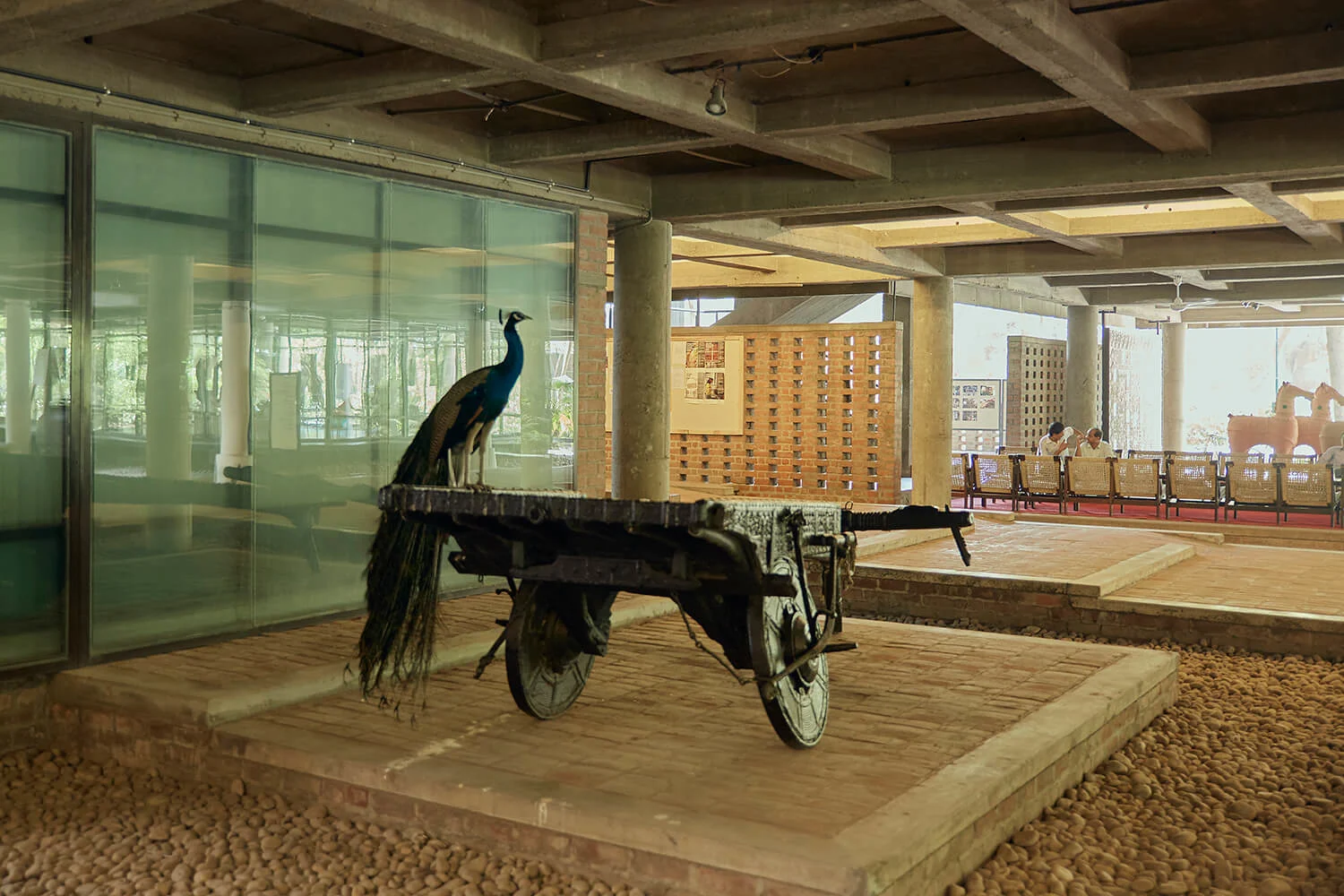

Each student is considered an individual entity; we never compare two students with each other.
The initial vision, as Pradyumna describes, was to develop thought leaders, not followers. This might feel a little at odds with the notion of co-creation, but while NID isn’t looking to create “design heroes,” it is still invested in a student’s personal development.
“It’s about allowing a student to develop his or her own thought process in coming up with a solution. Each student is considered an individual entity; we never compare two students with each other.”
The India Report opens with an excerpt from Hindu scripture The Bhagavad Gita, which reads, “you have the right to work but for the work’s sake only; you have no right to the fruits of the work They who work selfishly for results are miserable.” An active mantra for NID, its meaning is felt in every aspect of the institute, from the building to its students.
The NID’s home is the 600-year-old city of Ahmedabad, Gujarat’s largest and host to a number of global architectural influences. NID’s Ahmedabad campus itself is a monument to brutalism; a building that empowers students to move between disciplines.
“It’s almost like Lego – it’s so flexible that spaces can be changed to suit changing requirements. An apparel design student can switch to integrated design and then move to filmmaking,” says Pradyumna.
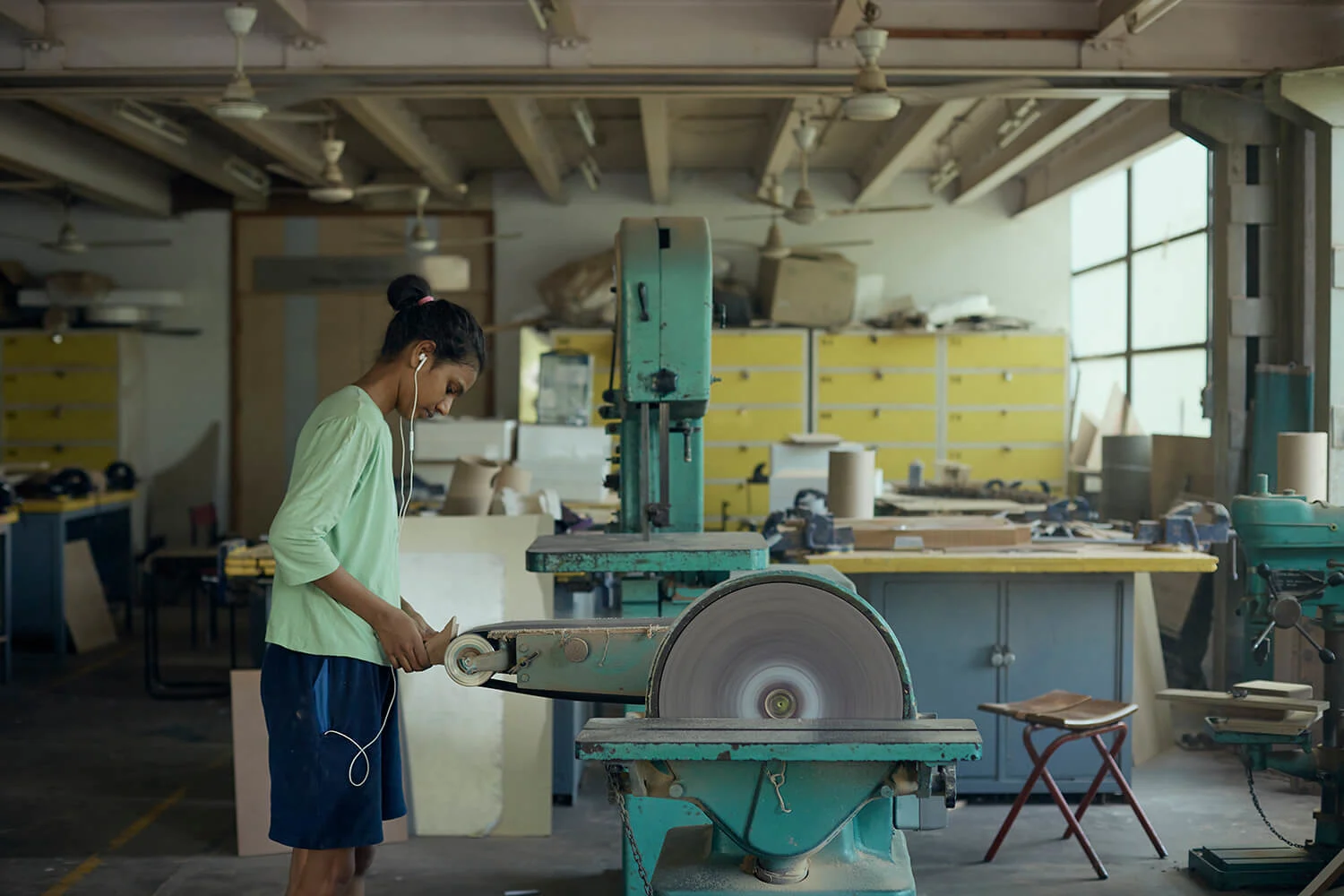

We are not creating design heroes or icons like Philippe Starck. What we have tried to do is initiate the co-creation of design activity.
Just across the road is Le Corbusier’s Sanskar Kendra Museum, designed in 1951 – the first of four public buildings in the city designed by the renowned Swiss-French architect. In fact, it was in the attic of this museum that the curriculum for NID first took shape, with industrialist Gautam Sarabhai calling on the talents of designers like Kumar Vyas and Dashrath Patel to help formulate an approach to the study of design.
In 2014, NID became the only design institution to be recognized as an Institute of National Importance by an act of Parliament in India. This granted NID university status, enabling it to offer its own qualifications, and giving it autonomy over its own curriculum.
Today, alongside a Bauhaus-inspired one-year foundation programme, the institute offers B.Des, M.Des and PhD programs in everything from product, textile, furniture and interior design to apparel, ceramics, transportation and automobile design.
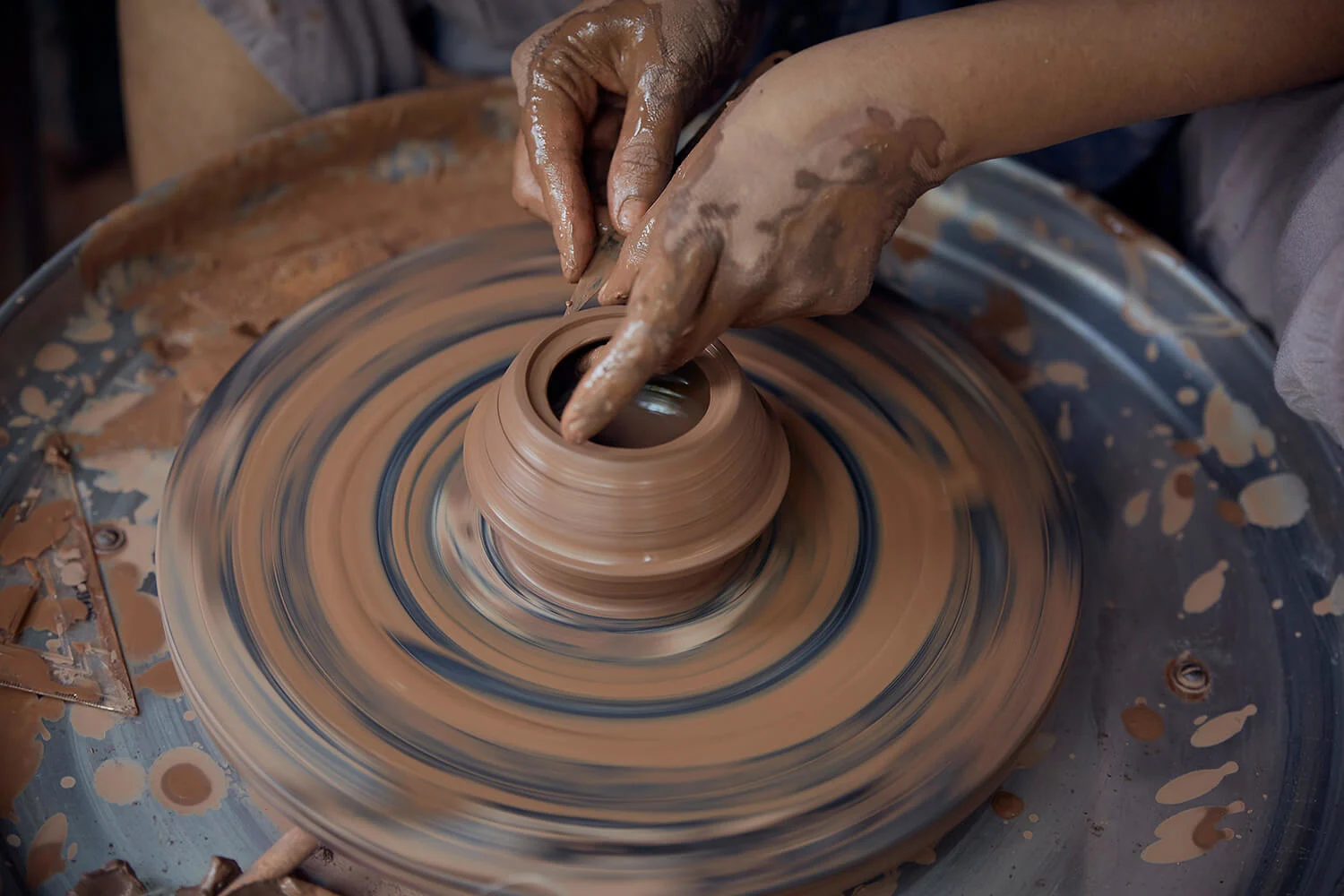
So it may be surprising to hear that, at least according to Pradyumna, “we do not have teaching.” Instead, they rely on the Bauhaus methodology of “learning through doing.” From its outset, NID students were encouraged to work with local handicrafts and engage in social issues. In 2018, they still are.
Alongside over 500 visiting faculty from institutions all over the world, local craftspeople are invited into the school to work alongside students. In an open classroom of the truest sense, in recent years, local weavers have been invited to speak about their processes, and students sent to weaving centres in rural India.
By bringing local craftspeople into the classrooms, textile design students for example not only get the chance to observe generations-old natural dyeing techniques, but consider how they might be made sustainable for contemporary living. Staying in nearby villages for up to 20 days, students can experience first-hand the strengths and weaknesses of neighboring areas.
If we talk about different sectors – healthcare, transportation, medicine, government, agriculture – design is required.
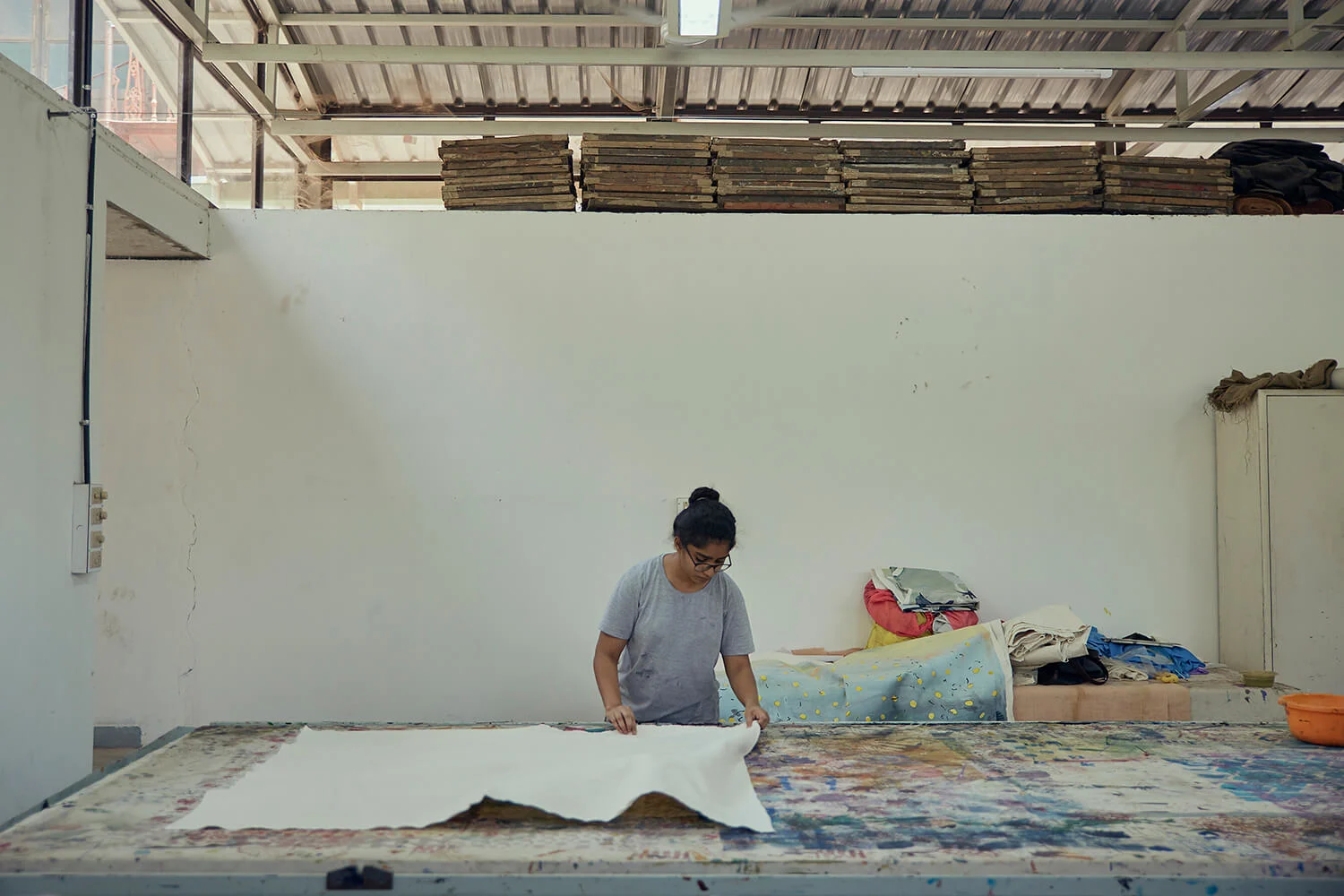
“To understand the problems people have, you need to have empathy,” Pradyumna explains. “Our students are developing an empathetic view towards society, and learning to put themselves in other people’s shoes to understand reality.” This is an institution with a view to turning a sense of hopelessness into helpfulness. The students at NID are being prepared to offer answers, not apologies.
The story of NID began with American designers, its curriculum inspired by Swiss thinking and its logo designed by a Swiss designer. But its story is one that uniquely casts India as its protagonist. One that celebrates the country’s design traditions – not by resigning them to a romantic kind of history, but by sustainably incorporating them into the present day.
The work being undertaken at NID is mindful of the future, without forgoing its past. It’s now readying itself to share its story, and its learnings, with the world.
Words by Marianne Hanoun
Photos by Amlanjyoti Bora
Illustration by Jordan Andrew Carter
Name: NID, National Institute of Design
Location: Ahmedebad, India (Heritage Campus)
Gandhinagar, India (Postgraduate Campus)
Bengaluru, India (R&D Campus).
Other NIDs are also located in Vijayawada, Jorhat and Kurukshetra; with new campuses soon to be opening in Jorhat and Bhopal
Director: Dr Pradyumna Vyas
Courses Offered: One-year Foundation programme in Design; BA programmes in Animation Film Design; Ceramic & Glass Design; Exhibition Design; Film and Video Communication; Furniture and Interior Design; Graphic Design; Product Design; and Textile Design. M.Des programmes in Animation Film Design; Apparel Design; Ceramic & Glass Design; Design for Retail Experience; Digital Game Design; Film and Video Communication; Furniture and Interior Design; Graphic Design; Information Design; Interaction Design; Lifestyle Accessory Design; New Media Design; Photography Design; Product Design; Strategic Design Management; Textile Design; Toy and Game Design; Transportation and Automobile Design; Universal Design. PhD programme in Design
Notable Alumni: Dibakar Banerjee, film director; Sujata Keshavan, graphic designer; Prasoon Pandey, advertising film director, listed among Advertising Age’s Top 100 advertising film directors; Lekha Washington, film actress, artist and product designer



